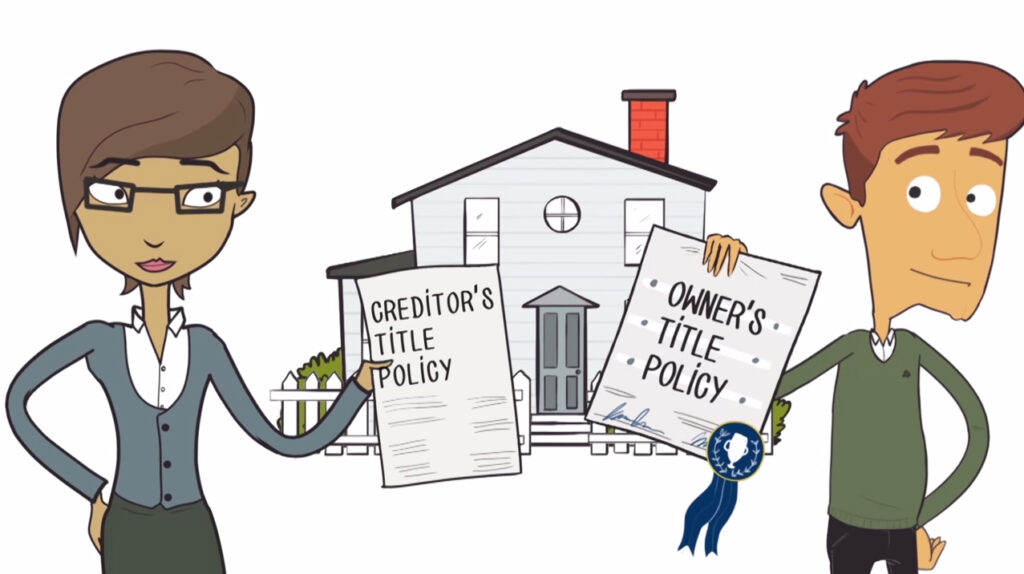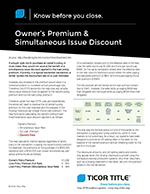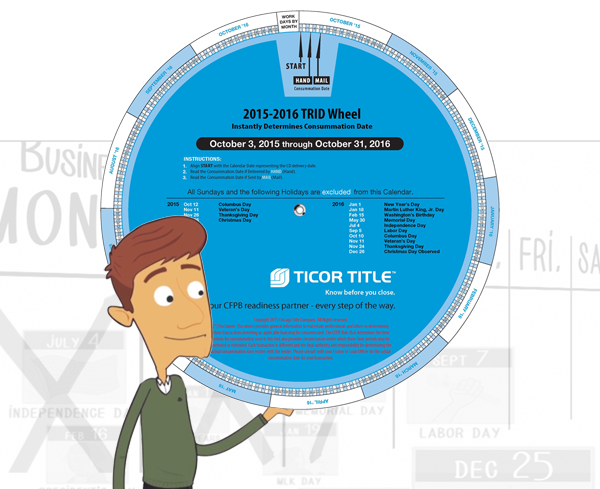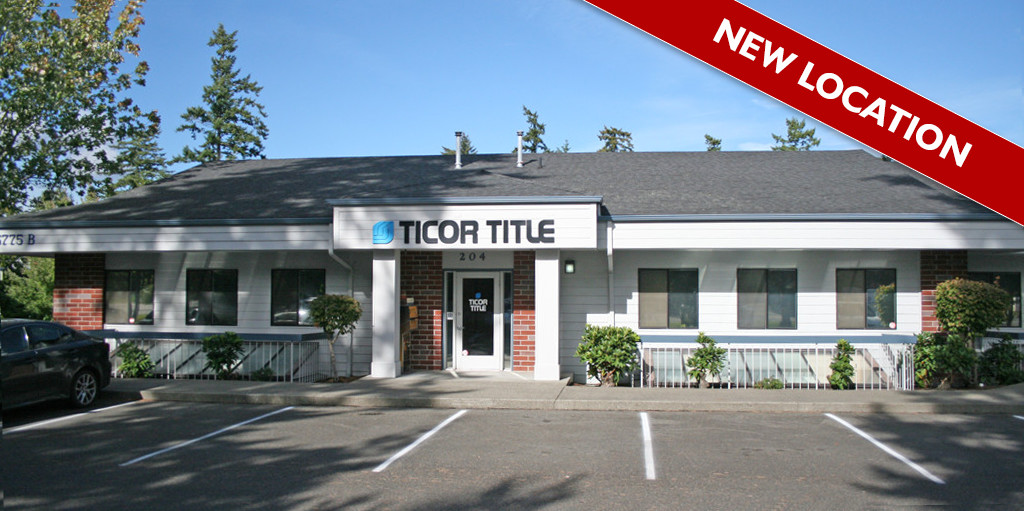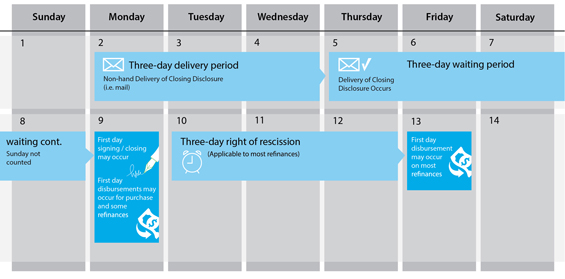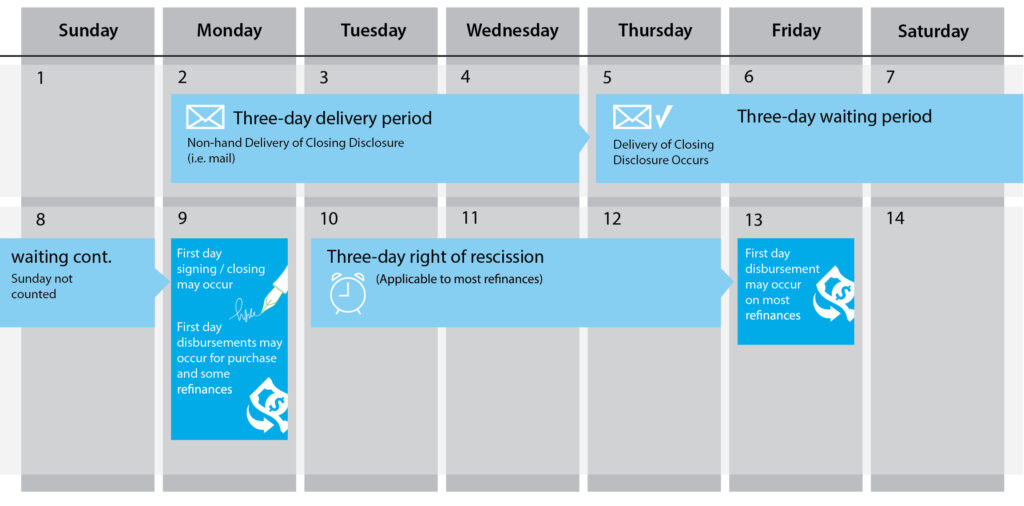As we all know, the Closing Process has changed since the enactment of the new TRID rule. And with the implementation of new forms, lenders and settlement agents work together to determine a workflow for the completion and delivery of the Closing Disclosure during the closing process. Below is one example that illustrates the process and shows which items the Lender typically performs and which items Escrow typically performs.
Who Completes the Closing Disclosure?
Lenders and settlement agents may agree to divide responsibilities with regard to completing the Closing Disclosure with the settlement agent assuming responsibility to complete some or all of the Closing Disclosure.
Who Delivers the Closing Disclosure?
The rule makes the lender responsible for ensuring that the consumer receives the Closing Disclosure. Lenders may work with the settlement agent to have them deliver the Closing Disclosure to consumers on their behalf.
Typical Escrow Workflow:
PERFORMED BY LENDER |
PERFORMED BY TICOR TITLE |
Open OrderLender will send order request through Real EC to the Ticor Title Escrow unit. The Escrow unit will open the escrow and request title report and order any payoffs required. |
1 |
|---|---|---|
| 2 |
Confirmation of Order and Preliminary ReportA confirmation is sent to the lender that the escrow order is opened and the preliminary report will be uploaded to Real EC. |
|
Documents RequestA CPL, fee quote, wiring instructions and any other documents that are requested by the lender will be uploaded to RealEC. |
3 | |
| 4 |
Closing Disclosure PreparationUpon delivery of lender’s instructions, the escrow unit will prepare the closing disclosure and upload to Real EC for lender review and approval. |
|
Delivery of Closing DisclosureThe Lender or escrow unit will prepare and deliver the closing disclosure to the borrowers as instructed and within the timeframe as required by the lender. |
5 |
Delivery of Closing DisclosureThe Lender or escrow unit will prepare and deliver the closing disclosure to the borrowers as instructed and within the timeframe as required by the lender. |
Closing Instructions and Loan DocumentsLender will prepare Closing Instructions and Loan Documents and send to escrow unit through Real EC. |
6 | |
| 7 |
Signing / ConsummationOnce received, escrow will schedule an appointment with the borrowers to sign the loan documents upon the expiration of the disclosure period. |
|
| 8 |
Loan Documents to LenderThe escrow unit will return executed loan documents and provide any outstanding conditions through Real EC that are required for the lender to provide funding authorization. |
|
Funding RequirementsLender provides additional funding requirements to Ticor Title Escrow & Escrow provides requirements to Lender. |
9 | |
Lender FundsLender sends funds to Ticor Title Escrow unit. |
10 | |
| 11 |
RecordationOnce the wire is received from the lender, the escrow will record the Deed of Trust and any additional required documents with the County Recorder’s office. ~ The original recorded documents will be uploaded to Real EC and sent to the lender as required. |
|
| 12 |
Final Title PolicyThe title company will send the final title policy to the lender as per their lender’s instructions. |
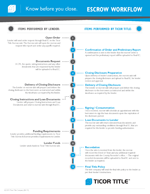
 We are pleased to announce the opening of our new Spokane Valley Operation and that Mick Templeton AVP / Branch Manager / Escrow Closer, Melody Sarff, Escrow Assitant, and Tricia Osterholm, Escrow Assistant have joined our Spokane Ticor Team and will staff our new office.
We are pleased to announce the opening of our new Spokane Valley Operation and that Mick Templeton AVP / Branch Manager / Escrow Closer, Melody Sarff, Escrow Assitant, and Tricia Osterholm, Escrow Assistant have joined our Spokane Ticor Team and will staff our new office.


